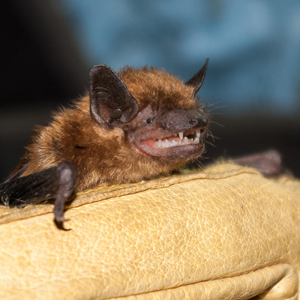Bats Continue to Die By the Millions From Killer Disease
By Chris Williams on March 31, 2014.
 White-nose Syndrome (WNS) doesn’t sound so bad, but the fungal disease has killed, and continues to kill, several of our bat species in New England. Bats that spend the winter in caves and mines are affected by a white, powdery fungus that begins on their faces, moves to their wings and limbs, and results in rapid weight loss which kills them or causes them to leave their hibernation site and freeze to death.
White-nose Syndrome (WNS) doesn’t sound so bad, but the fungal disease has killed, and continues to kill, several of our bat species in New England. Bats that spend the winter in caves and mines are affected by a white, powdery fungus that begins on their faces, moves to their wings and limbs, and results in rapid weight loss which kills them or causes them to leave their hibernation site and freeze to death.
White-nose syndrome was first discovered in bats hibernating in a cave near Albany NY in 2006. By 2013, WNS had killed more than 2 million bats from eastern Canada, south to Alabama, and west to Oklahoma. No one knows how to stop the disease’s spread or just how far it will eventually spread, or how long the disease will continue to kill bats.
Bat Deaths in Massachusetts
The largest bat hibernation site in Massachusetts is a mine in Chester where 10,000 bats used to spend the winter. By the end of winter 2008/2009, nearly every bat had been killed by WNS; tragically only 14 remained.
There are four bat species in Massachusetts that spend the winter in caves or mines. All have been affected by the disease and all are now listed as endangered. The little brown bat used to be the most abundant bat in Massachusetts, and one of only two bats that have summer colonies in Massachusetts’ homes. Now only the big brown bat colonies remain in homes. Big brown bats have been less affected by WNS since they hibernate in cold, dry attics rather than in caves or mines like the little brown bat.
Why Should We Care?
Bats are incredibly important predators on insects. We are only just beginning to understand the role they play in the overall health of an ecosystem. An abrupt decrease in insect predation by the catastrophic death of bats could lead to more insect pests, resulting in damage to forests and agriculture, increased use of pesticides, and an increase in public health diseases spread by mosquitoes and other insects. Bats (and their droppings) are also an important part of cave ecosystems. Their departure from caves could put many unique cave fauna that depend on the nutrient-rich guano in jeopardy.
The Massachusetts Division of Fisheries and Wildlife would like your help in tracking WNS. If you live in Massachusetts and have seen bats flying in the winter (Jan,-March), or if you have a summer colony of bats on your property, they would like to know about it. You can phone them at 508-389-6360 or email to [email protected] with your location, where the bats are roosting, and how many bats are in the colony.
If you have a bat colony in your home, there is still time to have the bats humanely removed before they have young this spring (See “Bat Removal Has a Narrow Window…Don’t Delay!”) Give Colonial a call today.